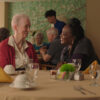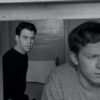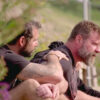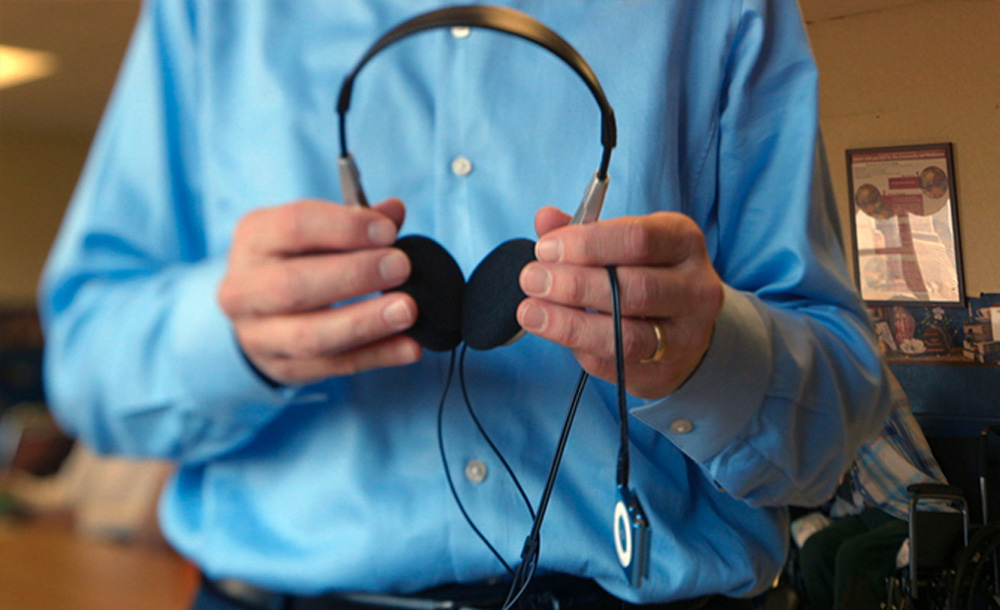As part of Dan Cohen’s daily work as the executive director for Music and Memory, an organization dedicated to reawakening neurological sensations amongst the elderly whose minds are mired with Alzheimer’s and dementia through music, he has become used to provoking a response from people. Yet after he and filmmaker Michael Rossato-Bennett teamed up three years ago to document the nearly magical experience he has treating patients thought to be lost causes suddenly spring to life as they listen to the music of their youth on an iPod, even they have been taken aback by the parade of standing ovations that have greeted the resulting film “Alive Inside,” which won the Audience Award for Documentary at this year’s Sundance Film Festival.
“Each of us were in two different cities in the last couple of nights and in both of these documentary film houses, the people that run these theaters say in the last number of years they just have not seen a standing ovation for a documentary in their theater in that period of time,” says Rosatto-Bennett. “It’s a reflection of how the film really reaches out to people and grabs them by the heart in a nice way,” adding with a laugh perhaps acknowledging the blockbuster competition he’s up against in the summer, “Not one of those movie monster grab the heart out ways.”
Just as there is something about music that cuts straight through the hazy memories of the elderly, there is a directness about “Alive Inside” cuts to the quick when tugging the heartstrings. Although music isn’t considered a therapy that can be chalked up as a covered medical expense, the film goes great lengths to show how a well-curated mp3 player can reawaken the minds of patients who can suddenly remember where they were when they first heard a song and use it as a building block to carry on a conversation. Still, Rossato-Bennett doesn’t need words to describe this process, simply training his camera at the start of the film on a 94-year-old named Henry, a decade-long hospice case whose eyes immediately widen after just a few bars begin to play. He is just one of a hundred people Cohen and Rosatto-Bennett spent time with over the years, in addition to relatives and others connected to their treatment, to create a strong case for the adoption of this alternative to become the norm when it comes to fighting the erosion of mental faculties.
On the eve of the film’s release in theaters, Cohen and Rossato-Bennett spoke about how “Alive Inside” came to be, how it’s already changing attitudes about music as a form of therapy and how it changed what Rossato-Bennett wanted to do as a filmmaker.

Dan Cohen: When I started this and I went into the nursing home to try this out, I had this great response and when I’d tell my friends about how great this was in terms of people really lighting up to the music in a way that was just surprising to me, they’d say, “Well, how nice, Dan. You’re bringing music to the old people.” And I said, “No, no, you don’t get it. This is bigger than just turning on the music for them. This is huge.”
Everybody is their own expert on music so I really had to show people directly and I needed a filmmaker to just [shoot] a few minutes of film. I asked some people who were providing some funding if they knew a filmmaker and they said, “Sure, we’ve done some work with Michael. You guys should work on this.” That’s how we got started.
I’ve actually read Michael’s mother teaches movement therapy, which I suspect is similar in how it reawakens the senses. Was that part of the appeal?
Michael Rosatto-Bennett: Yes, you’re absolutely right. My mother is a movement therapist and I studied dance and movement with her. And when you study dance and movement, what you’re really studying is the trigger point – the place where movement originates. It’s really probably the same place that music originates from, that part of ourselves that is not our cognitive mind. It’s not our memory. It’s not our thinking ability. It’s not our logic. It’s pre-verbal and part of our emotional system.
Oddly, for people with Alzheimer’s dementia specifically, that emotional system is still very, very alive. It’s just like dance or movement – when you initiate your human experience from that part of yourself that actually these Alzheimer’s people have lost, that we all experience when we’re lost in music or in dance, or in love or we’re crying or laughing or in some deep emotion, it’s from a very alive place. That was one of the mysteries of this whole experience, learning that this place of aliveness exists in these people that I, for one, thought was dead.

Michael Rosatto-Bennett: I really wanted to put the viewer into the film. I did a very odd thing for a documentary – I used a lot of point of view shots, from the perspective of the person in the institution and that was a little bit of a risk. It’s a little editorial but I just felt it was important to allow the viewer to walk a mile in their shoes.
It also seemed like it might’ve been risky to tell a larger story of how we treat our elderly when you had such rich stories from Dan’s patients, but you achieve a balance. Was it difficult to get right?
Michael Rossato-Bennett: Yeah, making a documentary film is a very organic process, or at least this one was. If I were to redo the film today, I might be a little bit more measured in the way I did things, but I was just trying to take people on a journey that would perhaps change their hearts and minds about the things that we want people to change their hearts and minds about. We want people to understand this isn’t just [about] going into nursing homes and put music on a bunch of people’s heads and leave. That won’t work. So the question is how do you educate people to the point where they’ll understand that perhaps connection is just as important as the music. That’s one of the things that both Dan and I are very excited about is music’s capacity to create moments of connection and interaction.
It’s an interaction on a different level. Like if I were to ask you to close your eyes and go back to when you were 15 years or or 16 years old and I were to say, “Hey, think of a song that you loved back then and tell me what images and what memories come with that song…”
I remember listening to the Verve Pipe song “Freshmen” and it takes me back to my prom.
Michael Rossato-Bennett: Right, and when you go back into your own memory and imagery, it’s waking up a part of you that is different than the part of you that’s talking to us right now.

Dan Cohen: The film is going to really accelerate awareness of this very simple but innovative approach. Our goal is to make this a standard of care. There’s 16,000 assisted living facilities, and these beautiful places, but 40% of the people in them on average also have dementia. There is another 1,000 hospices, 5,000 hospitals and thousands of adult day programs. So there are probably 60,000 care facilities all together and we’re in 640 of these types of facilities across 45 states and eight countries, about 1% of where we want to be. So the movie is going to help because everybody’s going to now have an opportunity to see [the impact of music] for themselves, they’re going to be moved and they’re going to say, “I have to do something for my mom who’s home and not sick yet, for my dad who is in a nursing home and has Alzheimer’s, for myself so I have my playlist ready so that one day if anything should happen to me people won’t have to try to guess what I want to hear.”
We also want to get students involved because they know the tech stuff. When you get old, the big fear is that nobody’s going to be left. Your friends have died. You’re in this nursing home. You’re not getting any visitors, but [we want to] get the students and the community back into these places. The music helps facilitate connection that way. When there’s music in the room, people are having a good time. It’s not like, “Oh, this is so hard. What do I say to this person with Alzheimer’s.”

Michael Rossato-Bennett: Honestly, I just decided that as soon as I started making this film, it had the possibility of changing life for a lot of people, so my loyalty became not to myself as far as my filmmaking or something I was trying to express. The challenge for me was finding a way to inspire other people in the way that we were inspired. It’s really all about the way we’re reconnecting people with their music and their own sense of self, but we’re also kind of reconnecting people in the audience with those around them. We’re giving them a tool to make that happen. It’s really been a wonderful way for me to make movies.
“Alive Inside” opens on July 18th in New York at the Sunshine Cinema, on July 25th in Washington DC at the E Street Cinema and on August 1st in Los Angeles at the Nuart, among other theaters. A full list of theaters and dates is here.




